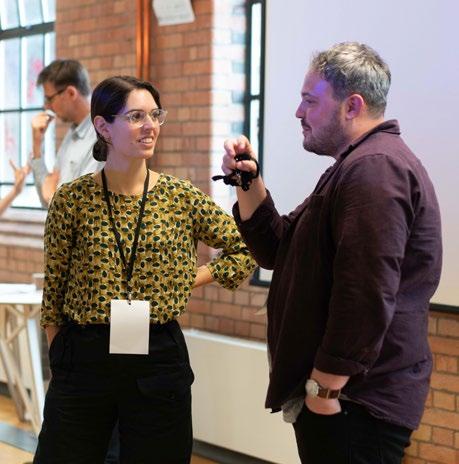
3 minute read
Learnings, recommendations and conclusion
4 Learnings, recommendations and conclusion
As part of the Tech to Connect Challenge, we also investigated areas where finalists, partners and stakeholders thought improvements could be made or additional opportunities could be made available.
The learnings and recommendations not only focus on how to improve the prize process, but also consider the various areas of impact (breakthrough innovation, help innovators thrive, systemic change) and where further support during and after the prize can be provided.
The conclusion will detail the contribution of the prize, especially in the context of social isolation in England and where future innovation could be useful to further support finalists.
Learnings
• The prize was able to attract a diverse range of innovators from across England with different experiences in social isolation and loneliness.
• The prize offered a robust yet dynamic support program for finalists through the events and the capacity building program, resulting in significant prototype and business development.
• The prize’s financial incentives, in particular the £25,000 grant funding, was an important feature in allowing finalists to produce prototypes.
• The prize raised awareness of the benefits and uses of technology in/ and amongst charities, social enterprises and civil society organisations working on social isolation.
Recommendations
• The capacity building support would have benefited from conducting a rigorous needs assessment of finalists to appropriately match them to the support they required. This should be done at the first point of contact with finalists at the Discovery Day.
• The vast nature of the topic of social isolation allowed for a breadth and depth of solutions - the prize may have benefitted from selecting finalists who were either all ideas and concepts or early stage prototypes or market-ready solutions to ensure the right support could be provided.
• There needs to be a greater emphasis on attracting a wider variety of entrants, in particular, ethnic minorities and LGBTQ+, as social isolation affects many communities in different ways, therefore it is important to have an intersectional lens to this.
Conclusion
More recently, with the coronavirus outbreak (COVID-19) and lockdown being issued in England and the UK, social isolation has become a central concern in which the Tech to Connect Challenge finalists and their solutions could have a vital role to play in supporting people across the country as many people are having to self-isolate and quarantine. The innovative technological solutions that bring people together virtually and provide online support will be even more important as people across the UK limit their face-to-face contact to reduce the spread of the virus. The finalists’ solutions will be available for people looking for ways to stay connected and be supported during this period of self-isolation.
At a programmatic level, the Tech to Connect Challenge positively met the majority of outcomes set and the finalists are now in a much stronger position to build on the success they have attained by participating in the prize. All the finalists had unique solutions which they were able to further develop into a prototype/market-ready solution, as well as presenting a viable business model and proposition. However as mentioned, all of the solutions are at different stages – some are early-stage and need further development and others are ready to enter the market. Finalists’ capabilities were increased to the point where they can have confidence in their business acumen and their ability to pitch to investors, while simultaneously being able to make contacts and network to find further collaborations and partnerships, given how early-stage many of the solutions are.
Over the course of the prize, there has been a wide range of growth from all finalists, either in their solutions or their organisations. However, there is limited and short term data from the finalists, and so it is not possible to extrapolate this information into impact. At this stage, we can only gauge the intended and prospective impact based on the various pathways the finalists have chosen. It is of great interest to see where these solutions will be in a year or three years, as there will be more data available to measure the level of impact they are having, but there is already a sense of achievement in what has been done through the prize.




58 Victoria Embankment, London EC4Y 0DS
challenges.org @NestaChallenges www.facebook.com/NestaChallenges www.linkedin.com/company/nesta-challenges

